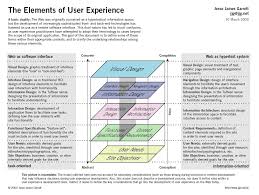Crafting Exceptional User Experiences: The Role of a UX Architect

The Role of a UX Architect in Creating Seamless User Experiences
In the world of digital design, the role of a UX architect is crucial in creating seamless and intuitive user experiences. A UX architect is responsible for designing the overall structure and flow of a digital product, ensuring that it is user-friendly, efficient, and visually appealing.
One of the key responsibilities of a UX architect is to conduct user research to understand the needs, preferences, and behaviors of the target audience. By gathering insights through surveys, interviews, and usability testing, they can identify pain points and opportunities for improvement in the user experience.
Based on their research findings, a UX architect creates wireframes and prototypes to visualize the layout and functionality of the digital product. These wireframes serve as a blueprint for developers and designers to follow during the implementation phase.
Collaboration with cross-functional teams, including designers, developers, product managers, and stakeholders, is essential for a UX architect to ensure that the final product meets both user needs and business goals. They work closely with these teams to iterate on designs based on feedback and testing results.
Furthermore, a UX architect pays close attention to information architecture, interaction design, visual design, and usability principles to create an engaging and cohesive user experience. They strive to make interactions with the digital product intuitive and seamless across different devices and platforms.
In conclusion, a UX architect plays a vital role in shaping how users interact with digital products by focusing on usability, accessibility, and user satisfaction. By combining research-driven insights with design expertise, they help create products that delight users and drive business success.
7 Essential Tips for Becoming a Successful UX Architect
- Understand the target users’ needs and behaviors.
- Create intuitive and user-friendly interfaces.
- Conduct thorough research on user experience trends.
- Collaborate closely with designers and developers.
- Test prototypes with real users for feedback.
- Stay updated on UX best practices and technologies.
- Iterate designs based on user testing results.
Understand the target users’ needs and behaviors.
Understanding the target users’ needs and behaviors is a fundamental tip for a UX architect. By conducting thorough research and analysis, a UX architect can gain valuable insights into what drives user behavior, preferences, and pain points. This understanding allows them to design digital products that cater to the specific needs of the target audience, resulting in an intuitive and user-friendly experience. By prioritizing user needs and behaviors in the design process, a UX architect can create solutions that resonate with users and ultimately lead to increased satisfaction and engagement.
Create intuitive and user-friendly interfaces.
Creating intuitive and user-friendly interfaces is a fundamental tip for UX architects to enhance the overall user experience of digital products. By designing interfaces that are easy to navigate, visually appealing, and aligned with user expectations, UX architects can ensure that users can interact with the product seamlessly and efficiently. Clear navigation, consistent design elements, intuitive interactions, and thoughtful placement of information all contribute to making the interface user-friendly. Prioritizing simplicity and clarity in design not only improves usability but also increases user satisfaction and engagement with the product.
Conduct thorough research on user experience trends.
To excel as a UX architect, it is essential to conduct thorough research on user experience trends. By staying informed about the latest developments in user behavior, design patterns, and technological advancements, UX architects can create innovative and user-centric solutions that meet the evolving needs of users. Continuous research allows them to incorporate best practices and emerging trends into their design process, ensuring that the digital products they create are not only visually appealing but also intuitive and engaging for users.
Collaborate closely with designers and developers.
When working as a UX architect, it is essential to collaborate closely with designers and developers to ensure the seamless integration of user experience design into the final product. By fostering open communication and sharing insights, ideas, and feedback with the design and development teams, a UX architect can align everyone towards creating a cohesive and user-centric digital experience. This collaborative approach allows for the incorporation of diverse perspectives and expertise, leading to innovative solutions that prioritize usability, functionality, and visual appeal in the digital product.
Test prototypes with real users for feedback.
Testing prototypes with real users is a crucial step in the UX design process. By gathering feedback directly from users, UX architects can identify usability issues, uncover pain points, and validate design decisions. Real user testing provides valuable insights that help refine the user experience and ensure that the final product meets the needs and expectations of its target audience. Incorporating user feedback early and often in the design process leads to more intuitive and user-friendly digital products.
Stay updated on UX best practices and technologies.
To excel as a UX architect, it is essential to stay updated on UX best practices and emerging technologies. By keeping abreast of the latest trends in user experience design, you can ensure that your designs are innovative, user-friendly, and aligned with industry standards. Continuous learning and exploration of new tools and techniques allow you to deliver cutting-edge solutions that meet the evolving needs of users in today’s digital landscape. Embracing ongoing education in UX design empowers you to create engaging and seamless experiences that resonate with users and drive the success of digital products and services.
Iterate designs based on user testing results.
Iterating designs based on user testing results is a fundamental tip for UX architects to enhance the user experience of a digital product. By incorporating feedback and insights gathered from real users during testing sessions, UX architects can identify areas for improvement and refine the design to better meet user needs and expectations. This iterative process allows for continuous refinement and optimization, ultimately leading to a more intuitive, user-friendly, and effective design that resonates with the target audience.
